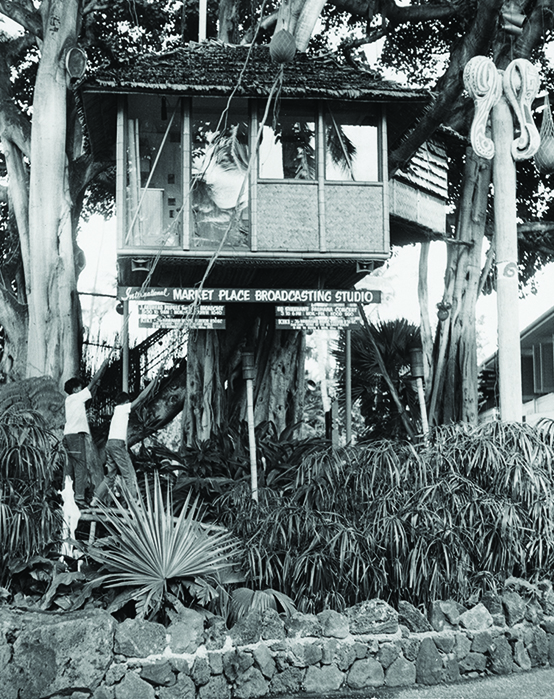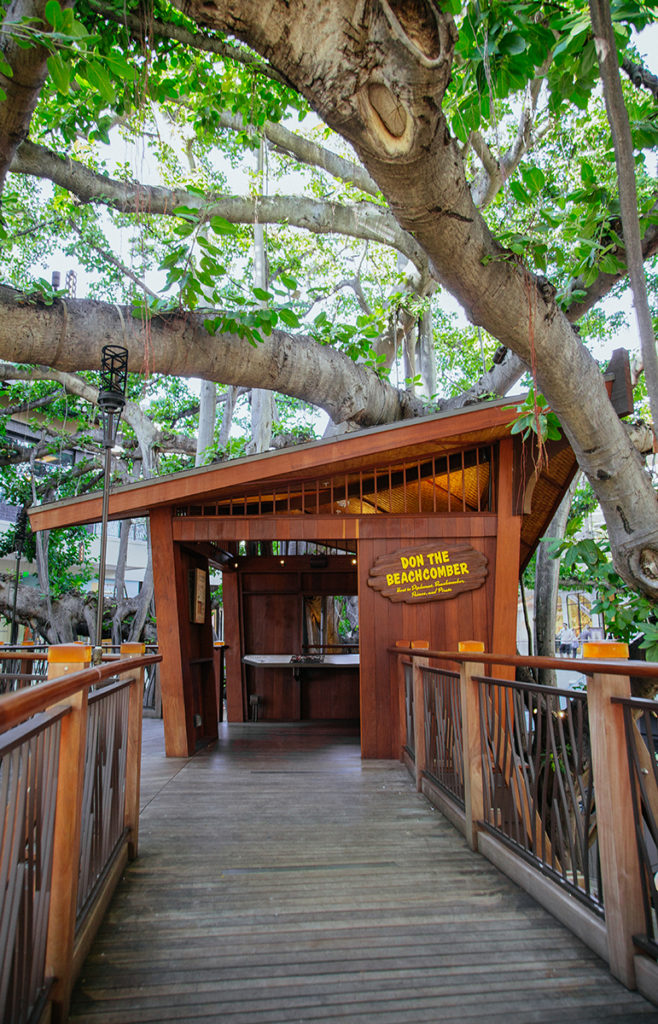

Up in the Air
At the height of the radio era, the International Marketplace made waves around the world with regular local programming.
✏️ NAZARETH KAWAKAMI
📸 SKYE YONAMINE & COURTESY OF HAWAII STATE ARCHIVES, NANCY BANNICK COLLECTION
ラジオの時代
ラジオの黄金時代、インターナショナルマーケットプレイスのバニヤンツリーの上にあった小さなラジオ局が世界中にハワイ発の番組を届けていた。
The 1940s through the 1970s was Hawaiʻi’s “Golden Era” of travel. Pan American’s first Hawaii Clipper passenger flight arrived in 1936, making the islands more accessible than ever and set the foundation for a culture of hospitality upon which the economy relies today. However, this era wouldn’t have been what it was without its soundtrack: the relaxed, smooth sounds of Hawaiian steel-guitar and other contemporary Hawaiian music played on radio shows which broadcasted across the world from stations like the International Marketplace’s very own treehouse.
Nestled up in the famous banyan tree at the center of the International Marketplace was Don the Beachcomber’s treehouse home—complete with a licensed radio station. From that station, disc jockeys would broadcast the marketplace’s live shows to a worldwide audience, helping to spread Hawaiʻi’s music. Later on, the station would grow from only hosting live shows to having resident DJ hosts and almost 24-hour broadcast coverage, floating along the AM 590 KGMB waveband which would later become KSSK, as it remains to this day.

Between the 1950s and ’70s, from their radio perch high up in the banyan, Hal Lewis and George Groves—better known by their stage names, DJ J. Akuhead Pupule and DJ Granny Goose—used the radio airwaves to play the tunes they loved and keep the islands entertained. Sometimes this came at the islanders’ expense. DJ Akuhead Pupule was a notorious prankster, famously announcing Hawaiʻi’s American statehood in 1951, eight years too early. He once even summoned thousands of people to the streets to observe a parade that did not exist, his narration adding to their bewilderment.
Though they switched among stations throughout their careers, the time that they and all other DJ’s spent in the treehouse is solidified in the memories of a generation of Hawaiians who were raised on their voices. As Waikīkī surfer Kale Omori remembers, “My brothers and I used to spend whole days on the beach with a little radio listening in.” Omori continues, “We always wanted to go knock on the [treehouse] door, but being kids, just being that close and listening was good enough.”
Despite Donn the Beachcomber never having hosted a recurrent broadcast show himself, it had been his intent to grace Hawaiʻi’s radio waves since he first broke ground at the International Marketplace, announcing in a 1956 newspaper that there would be live broadcast every Sunday afternoon. At the time, radio was the most popular media format in the world. It allowed for information, music, and culture to be sent out and brought into your home and that is exactly what Donn Beach wanted—to bring the aloha from his home in Waikīkī to your home, wherever that might be. His voice may not have gone out every Sunday, but thanks to Donn, the phrase “broadcasting live from the Banyan tree” came through loud and clear every day all across the world for decades to come.








